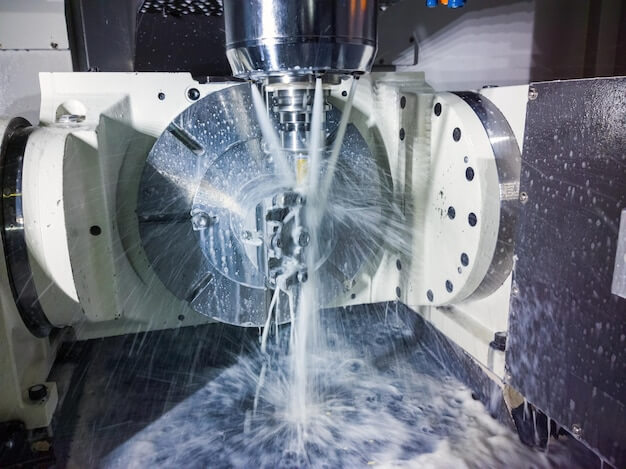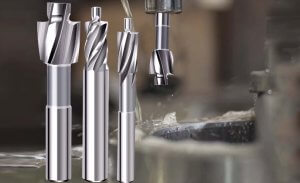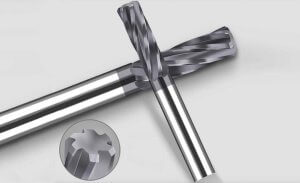Material Choice Importance in Automotive Manufacturing: Magnesium Alloys vs Aluminum
In the world of automotive manufacturing, the choice of materials is instrumental as it affects overall performance, aesthetics, cost-efficiency, and sustainability of vehicles. Recently, magnesium alloys have been put under scrutiny given their potential to serve as a viable alternative to traditional aluminum. As lightweight metals, both aluminum and magnesium possess qualities desirable in the industry: they are both corrosion-resistant, have high strength-to-weight ratios, offer considerable dimensional stability, and enable significant weight reduction which enhances fuel efficiency.
- Magnesium’s characteristics make it appealing as it weighs approximately 33% less than aluminum.
- Its yield strength stands at roughly 200 MPa compared to aluminum’s malleability and tension levels at room temperature.
Adopting magnesium alloys contributing to weight reduction could eventually culminate in lower greenhouse gas emissions—an increasingly critical consideration for contemporary vehicle manufacturers. Despite these aspects, it remains crucial to assess other factors such as magnesium extraction’s environmental impact, alloy processing methods, potential increases in manufacturing costs, and safety standards adherence when more tremendous heat loads generate on components during operation. Potential shifts from aluminum to magnesium alloys should hinge upon thorough examination and ongoing material innovation development.
Understanding Aluminum in Automotive Manufacturing
Aluminum has been traditionally utilized in car production due to a variety of beneficial properties. Its lightweight nature is one of its primary advantages, significantly contributing to efficient fuel consumption and overall vehicle performance. Its ductility helps it easily take on various forms, making it highly adaptable for different parts of the vehicle. The Ford F150 truck series, for instance, extensively uses aluminum to reduce weight without compromising sturdiness.
- Weight: Aluminum is approximately 1/3rd as heavy as steel, helping cut down vehicle weight which increases mileage and reduces CO2 emissions.
- Cost: While cheaper than most high-performance materials like carbon fiber, the cost of aluminum can fluctuate with market conditions, potentially increasing production costs.
- Durability: It offers superior resistance to corrosion but will generally show less strength compared to steel when subjected to equal loads.
In balance, while there are challenges associated with the use of aluminum, auto manufacturers continue to capitalize on its advantages so much so that even luxury car models such as Audi’s A8 employ an all-aluminium design.
Exploring Magnesium Alloys as an Alternative
Magnesium alloys occupy a significant position in the family of lightweight metals due to their unique set of properties. Created by combining magnesium with other elements, these alloys are distinguished for their exceptional lightness and strength. Compared to aluminum, magnesium alloys are about 33% lighter, which directly translates to fuel efficiency if deployed in automotive applications.
The cost of using magnesium over aluminum might be slightly higher, but its impact resistance and recyclability make this material highly appealing for automakers aiming at sustainability and damage resistance. Meanwhile, these alloy’s structural stability is commendable under severe stresses making them apt for demanding environments.
- Weight: Magnesium alloys’ reduced weight leads to increased fuel efficiency in vehicles.
- Cost: Although initially more expensive, the long-term benefits of durability and recyclability can offset these costs.
- Impact Resistance: These alloys are known for their remarkable capacity to withstand physical damages.
To illustrate the practical use, magnesium alloys are already being incorporated in several automobile parts like engine blocks, wheel rims, gearboxes, and other internal components. This advancement has been particularly seen in luxury cars where reducing weight while maintaining performance is of paramount importance.
Detailed Comparison Between Aluminum and Magnesium Alloys
In the automotive industry, the choice between aluminum and magnesium alloys is critical due to their impact on vehicle performance, fuel efficiency, and sustainability. This comparison aims to provide a clear understanding of their properties and applications.
Properties of Aluminum Alloys
- Lightweight: Essential for modern vehicles to improve fuel efficiency and reduce emissions.
- Durability: Offers high resistance to corrosion, ensuring longevity of automotive parts.
- Thermal Conductivity: Higher than magnesium, beneficial for heat dissipation components.
- Cost: Generally more affordable than magnesium alloys, making it a cost-effective option for large scale production.
Properties of Magnesium Alloys
- Ultra-lightweight: 33% lighter than aluminum, providing significant weight reductions.
- Strength-to-weight Ratio: High, which is crucial for structural applications in vehicles.
- Corrosion Resistance: Improved with modern alloying techniques, though generally less than aluminum.
- Environmental Impact: Magnesium is more environmentally friendly, with lower carbon footprint during production.
Applications in the Automotive Industry
| Alloy Type | Common Applications |
|---|---|
| Aluminum Alloys | Engine parts, body panels, wheels, frames |
| Magnesium Alloys | Interior components, seat frames, certain engine parts |
While aluminum alloys have been the go-to material for automotive applications due to their balance between cost, durability, and performance, magnesium alloys are emerging as a viable alternative, especially for applications where weight reduction is paramount. The choice between these two materials depends on specific application requirements, including desired weight, strength, cost considerations, and environmental impact.
Conclusion
Both aluminum and magnesium alloys offer unique advantages for automotive applications. Aluminum stands out for its cost-effectiveness and thermal properties, while magnesium offers superior lightweight and environmental benefits. The decision to use one over the other should be based on a detailed analysis of the application requirements, considering factors such as weight, strength, corrosion resistance, and overall cost.
Transition to Injection Molding Materials: Polycarbonate vs. Acrylic
In the domain of parts manufacturing, injection molding plays a pivotal role as it enables mass production of identical items in an efficient and cost-effective manner. Essentially, this process involves injecting molten material into a mold with a specific shape that hardens upon cooling. The materials utilized greatly influence the outcome – durability, impact resistance, clarity, and formability. Two commonly employed materials in this context are polycarbonate and acrylic.
- Polycarbonate: Noted for its incredible strength and toughness, polycarbonate can withstand substantial force without fracturing. It additionally boasts high transparency, making it optimal for applications necessitating visual clarity.
- Acrylic: Known for its excellent optical properties, lightweight nature and affordability, acrylic tends to be more rigid than polycarbonate but is less resistant to impact.
Each material has distinct benefits and potential constraints; therefore, it’s crucial to consider application-specific needs before selection.
In-Depth Look at Polycarbonates
Polycarbonate, a type of thermoplastic polymer which contains carbonate groups in its chemical structure, is widely utilized in various industries due to its high impact resistance and transparency. Ideal for numerous applications, it’s extensively found in products like compact discs, eyewear, and automotive components.
Pros and Cons of Utilising Polycarbonates:
- Pros: Notable for their remarkable toughness and ability to withstand extreme temperatures, polycarbonates offer excellent dimensional stability and optical clarity. They are lightweight, easy to mold and possess flame-retardant properties as well.
- Cons: The downside however rests in their susceptibility to scratching and exposure to UV radiation can lead to discoloration over time. Additionally, they tend to be more expensive than alternate materials like acrylics.
To illustrate, in the automotive industry, despite having higher costs, manufacturers often prefer using polycarbonates for producing headlight lenses because of this material’s heat tolerance property when compared to acrylics.
Getting Familiar with Acrylics
In the realm of injection molded materials, acrylics hold a prominent position, recognized mainly for their excellent clarity and transparency. Functionally speaking, they demonstrate high impact resistance, superior dimensional stability, and provide relatively good protection against UV rays. These features make them favorable in manufacturing many automotive parts like windscreens or headlamp lenses, where visibility and durability are crucial.
- High Impact Resistance: Compared to other molding materials such as polycarbonate, acrylic displays enhanced ability to withstand strong forces, reducing the likelihood of cracks or structural failures.
- Dimensional Stability: The inherent rigidity and low shrinkage factor of acrylic allow it to maintain its shape under varying temperatures and pressures, resulting in more precise components.
- UV Protection: With its natural capability to filter harmful ultraviolet radiation, acrylic is often chosen for applications that are exposed to sunlight, minimizing damage due to prolonged exposure.
However, potential drawbacks include a susceptibility to scratching and less flexibility compared to some alternatives such as polycarbonate. It’s also important to note that despite these general characteristics presenting a compelling case for using acrylics in certain settings, the choice of material will depend on specific use-cases, taking into account factors like cost-effectiveness, design requirements, among others.
Comparing Polycarbonates and Acrylics for Injection Molding
When considering the use of polycarbonates and acrylics in automotive injection molding, it’s vital to weigh up their respective strengths and weaknesses. Polycarbonates are known for their exceptional durability – they’re resistant to shattering and can endure high temperatures, making them a reliable choice for parts that undergo intense heat or substantial wear and tear. Additionally, they have good optical properties which make them suitable for clear components. However, these benefits come at a cost. Polycarbonates are generally more expensive than other materials due to their superior performance characteristics.
- Acrylic: In contrast, while not as robust as polycarbonates, acrylic is cheaper and still offers decent performance. Its main advantage lies in its excellent transparency and UV resistance, making it a popular choice for decorative elements and light covers. It’s also easy to mold, offering a degree of flexibility to manufacturers.
-
Overall: Ultimately, the decision between polycarbonate and acrylic will depend on factors like cost-effectiveness, intended part application, and the specific performance requirements.
Other Articles You Might Enjoy
- Magnesium Alloys: Are They a Viable Alternative to Aluminum in Automotive?Injection Molding Materials Face-Off: Polycarbonate vs. Acrylic
Introduction to Automotive Injection Molding Materials The application of different materials in automotive injection molding has been subjected to rigorous debates, particularly between magnesium alloys and aluminum. Both exhibit strong…
- CNC Machining and the Quest for Lightweight Materials: Aluminum-Lithium Alloys
CNC Machining and the Quest for Lightweight Materials: Aluminum-Lithium Alloys CNC machining, standing for 'Computer Numerical Control', serves as a cornerstone of modern manufacturing processes. It leverages computer programming to…
- The Future of Automotive Manufacturing: Aluminum vs. Composite Materials in CNC Machining
Automotive Manufacturing: The Role of Materials In the automotive industry, the choice and application of materials plays a significant role in overall vehicle performance, efficiency, and longevity. Predominantly, two materials…








